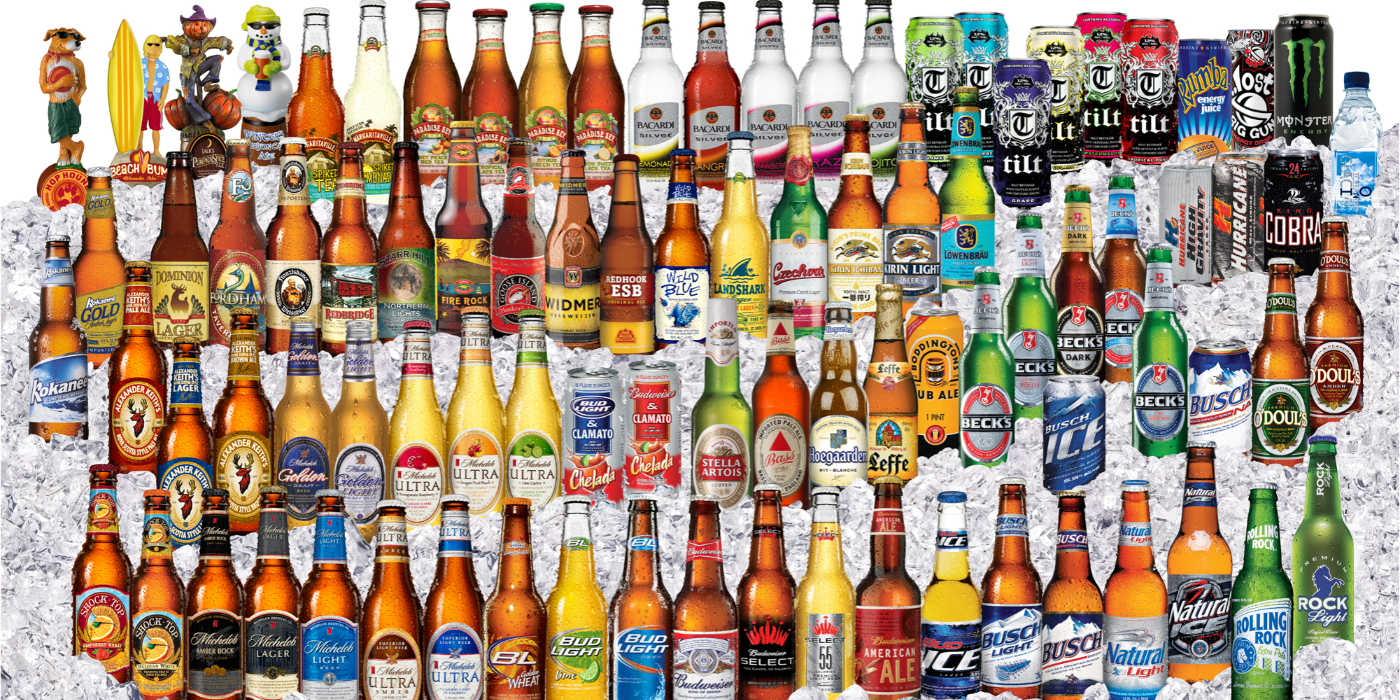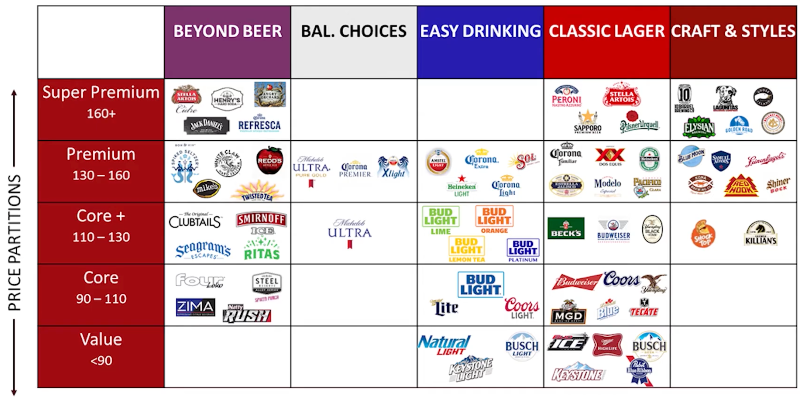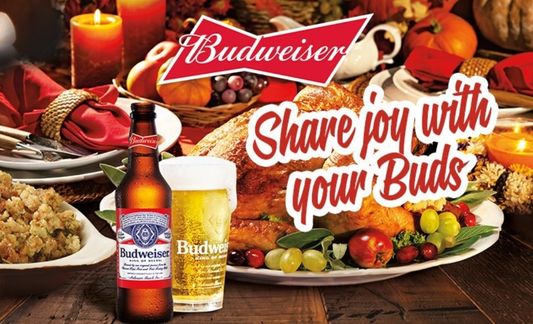Please do not participate in a Facebook scam about a $100 voucher. Facebook is working to have it removed.

Flat. It's not just what happens if you open a can of beer and let it sit too long. It's also what's been happening to beer category sales the past few years. With beer's core demographic aging and focusing on moderation and young drinkers preferring wine and spirits, who is driving this $11 billion industry?
“To unlock growth, we must understand who is drinking, when are they drinking and what they are drinking,” says Keith Campo, director of large formats at Anheuser-Busch.
The IGA retailers who understand the "who, what, and when," as Campo says, are excelling in beer sales and are also the highest-performing stores across IGA. So what are they doing to capitalize on this important category that other retailers can try?
Campo and IGA CEO John Ross shared insights and strategies on how retailers can maximize sales and profits in the recent webinar, Driving Sales in the Beer Category. From ensuring the right assortment to timing your ads and merchandising, learn what the best of the best are doing to boost beer sales.
THE WHO
Who is the typical beer drinker and what are they looking for when shopping the adult beverage aisle of their grocery store? Here’s a quick look at some facts and figures:
- The traditional beer shopper is male between the ages of 30-49.
- As people age (50+), they tend to consume less beer.
- Young people (known in the industry as LDAs, or “Legal Drinking Age”) are gravitating toward wine and spirits over beer.
- Women typically have the lowest adoption rate of beer, preferring flavored malt beverages (FMBs), hard cider, seltzers, etc.
- Across the board, more people are prioritizing health and wellness.
While overall sales remain strong, as mentioned, Campo says beer consumption is down about one percent over the last few years as traditional drinkers focus on moderation, and Baby Boomers—a core beer demographic—reduce their beer consumption.
But there's hope!
There are still big opportunities for growth in specific subsets of the beer category, in craft beers and "near beer" beverages such as hard seltzers. To take advantage of those opportunities, you just need a bit of knowledge and understanding of the forces at play behind these trends.
- Better for You. Yes, there can still be a place for beer in a healthy lifestyle. Wellness-minded beer drinkers tend to look for low-calorie or low-carb solutions. “For example, our own brand Ultra is the number one growth in the marketplace,” says Campo. Hard seltzer, with all-natural ingredients and low carbs, is also seeing a spike in popularity.
- Near beers. Speaking of hard seltzers, this subset is leading the beer category in growth, with no sign of slowing. “The growth of near beers is in double digits, and we’re going to see more entering the marketplace,” says Campo, like Bud Light’s new release of 15 flavors of seltzer. While some seltzer drinkers are also beer drinkers, many are coming from outside the category (shifting from wine or spirits), which is especially true of women drinkers.
- Singles. The ability to buy singles or Pick 6 mix and match six-packs gives the shopper a way to try new products with a low barrier of entry. Having a dedicated singles area also gives grocery retailers a way to compete with convenience stores.
THE WHAT
Anheuser-Busch has divided the beer category into five subsets: Beyond Beer, Balanced Choices, Easy Drinking, Classic Lager, Craft & Styles, which are also broken down into five different price partitions: Value, Core, Core+, Premium, and Super Premium.

The core brands in the Easy Drinking and Classic Lager subsets, Budweiser/Bud Light, Coors/Coors Light, Miller, etc., make up 40 percent of sales, so any changes in the beer aisle still need to preserve that volume, Campo said. At the same time, all the new growth and higher profits are in premiumization: the Premium and Super Premium options in the Beyond Beer and Craft & Styles subsets.
Campo boils the strategy down to this: “Where is the future going? Premium. What do we need to maintain? The core volume.”
Adds Ross, “Our shoppers are all of those columns. We have the opportunity to serve customers in these new categories and focus on the ones that are growing.”
Based on those insights, Campo advises retailers to ask themselves:
- Do I have the right assortment based on my consumer demand?
- Do I have shelf flow, is it easy for my customers to find what they’re looking for?
- Do I have the right display strategy?
- How can I maximize my craft beer selection?
- How can I integrate beer into food for full-store solutions and bigger baskets?
THE WHEN
When looking at when people are likely to drink, Campo identifies three main occasions:
- Socializing. The biggest beer occasion, 35 percent of total alcohol consumption takes place at social occasions.
The opportunity: Shoppers picking up beer for a party are more likely to try something new.
- Eating. The biggest alcohol occasion overall. Many beer drinkers, especially craft beer enthusiasts, are likely to try new beers when eating out in restaurants and brew pubs.
The opportunity: Grocery store owners have a big opportunity here to help guide recommendations for beer and food pairings, particularly around local craft beer. “Local is big. It’s where all the growth is in craft,” says Campo, which fits in perfectly with IGA’s "Local Equals Fresh" campaign.
- Relaxing. Historical beer territory, this occasion is down overall.
The opportunity: consumers are time-starved and want easy solutions. Make sure you are preserving core brands in addition to branching out into new areas.
Next steps:
According to Campo, there are a number of things retailers can do immediately and as part of a long-term strategy.
Follow these merchandising tips:
- Lead with near beers. Position the placement at the end of the aisle for new users who don’t get down the aisle.
- Look at how you organize your shelves. Is it by brand, by drinking occasion? Do you have a balance of core and premium? Is it easy to shop?
- Manage assortment for who’s in your store. Offer some opportunities for trade up, but at the same time don’t make too much assortment. Too many choices confuse the customer.
- Build confidence with craft. Feature a good representation of local and look for ways to educate the customer through micro-messaging, staff recommendations, reviews, etc. “It gives them confidence about how it’s going to taste. Wine has done a good job with this,” says Campo.
IGA is ready to help your store boost beer sales with the right assortment and merchandising, as outlined in the webinar. Ross says that Red Oval partner Anheuser-Busch will work with a store to complete a category makeover, while the IGA visual merchandising team will create signage to educate consumers and make the products stand out. Once the results from the store makeover are in, IGA and Anehuser-Busch will develop a category driver toolkit and work to build beer education into the National Digital Ad and online content.
Interested in volunteering for the beer aisle makeover? Contact IGA's Heidi Huff to submit your store for consideration.
null
Previous Story
← Driving Sales in the Baby Category
You May Also Like
These Stories on Alcohol Category
Aug 19, 2025 1:45:43 PM |
2 min read
Jul 13, 2022 4:44:32 PM |
1 min read


No Comments Yet
Let us know what you think